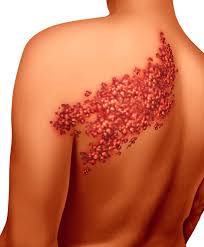
Postherpetic Neuralgia (PHN): Causes, Symptoms, and Treatment
Postherpetic Neuralgia (PHN) is a chronic nerve pain condition that occurs after a shingles (herpes zoster) infection. It happens when the varicella-zoster virus (VZV), which causes chickenpox and shingles, damages the nerves, leading to persistent pain that can last for months or even years after the shingles rash heals.
Causes & Risk Factors
PHN develops when nerve fibers are damaged during a shingles outbreak, causing them to send exaggerated pain signals to the brain. Factors that increase the risk of PHN include:
- Older age – People over 50 have a higher risk.
- Severe shingles rash – A more intense outbreak increases nerve damage.
- Delayed treatment of shingles – Starting antiviral medications early can reduce the risk.
- Weakened immune system – Conditions like diabetes, HIV, or cancer make PHN more likely.
- Location of shingles – Shingles affecting the face or torso has a higher risk of PHN.
Symptoms
- Persistent burning, stabbing, or throbbing pain in the area where shingles occurred.
- Increased sensitivity (allodynia) – Even light touch (like clothing or wind) can cause pain.
- Numbness or tingling in the affected area.
- Itching or electric shock-like sensations.
- Pain lasting more than 3 months after the shingles rash has healed.
Diagnosis
PHN is diagnosed based on:
- Medical history (recent shingles infection).
- Symptoms of chronic nerve pain lasting after the rash heals.
- Physical examination to check skin sensitivity and nerve function.
No specific lab tests are needed, but nerve conduction studies or imaging (MRI/CT scans) may be done to rule out other nerve disorders.
Treatment & Management
There is no cure for PHN, but treatments focus on reducing pain and improving quality of life.
1. Medications
- Anticonvulsants (e.g., Gabapentin, Pregabalin) – Reduce nerve pain by calming overactive nerves.
- Antidepressants (e.g., Amitriptyline, Nortriptyline, Duloxetine) – Help block pain signals.
- Topical treatments (e.g., Lidocaine patches, Capsaicin cream) – Provide local pain relief.
- Opioid painkillers (e.g., Tramadol, Oxycodone) – Only used for severe, unmanageable pain.
- Steroid injections or nerve blocks – May be used in resistant cases.
2. Home Remedies & Lifestyle Changes
- Apply cool compresses to soothe irritated skin.
- Wear loose, soft clothing to avoid triggering pain.
- Practice stress management (yoga, meditation) to reduce pain perception.
- Gentle massage therapy may help some individuals.
3. Advanced Treatments (For Severe Cases)
- Spinal cord stimulation – Uses electrical impulses to block pain signals.
- Transcutaneous electrical nerve stimulation (TENS) – Helps with nerve pain relief.
Prevention
- Shingles Vaccine (Shingrix) – Highly effective (over 90%) in preventing shingles and PHN, recommended for adults 50+ years or those with weakened immune systems.
- Early antiviral treatment (Acyclovir, Valacyclovir) – If shingles occurs, starting medication within 72 hours reduces the risk of PHN.
Prognosis & Long-Term Outlook
- Most cases improve over time, but some may last for years.
- Early treatment increases the chance of pain relief.
- Chronic cases can impact sleep, mood, and daily activities, requiring long-term pain management strategies.
If you’re looking for natural remedies, pain management tips, or information on the shingles vaccine, let me know!

